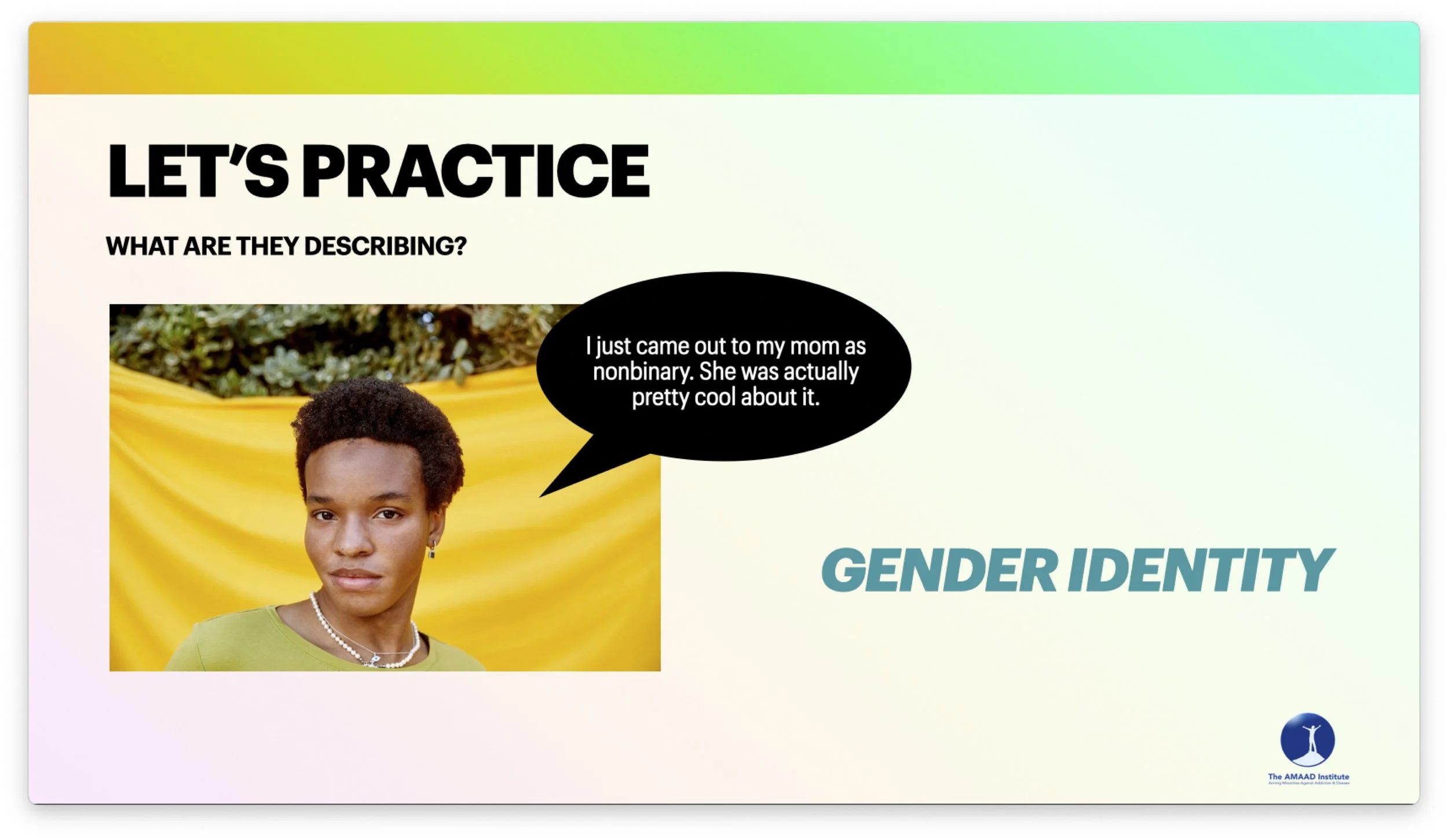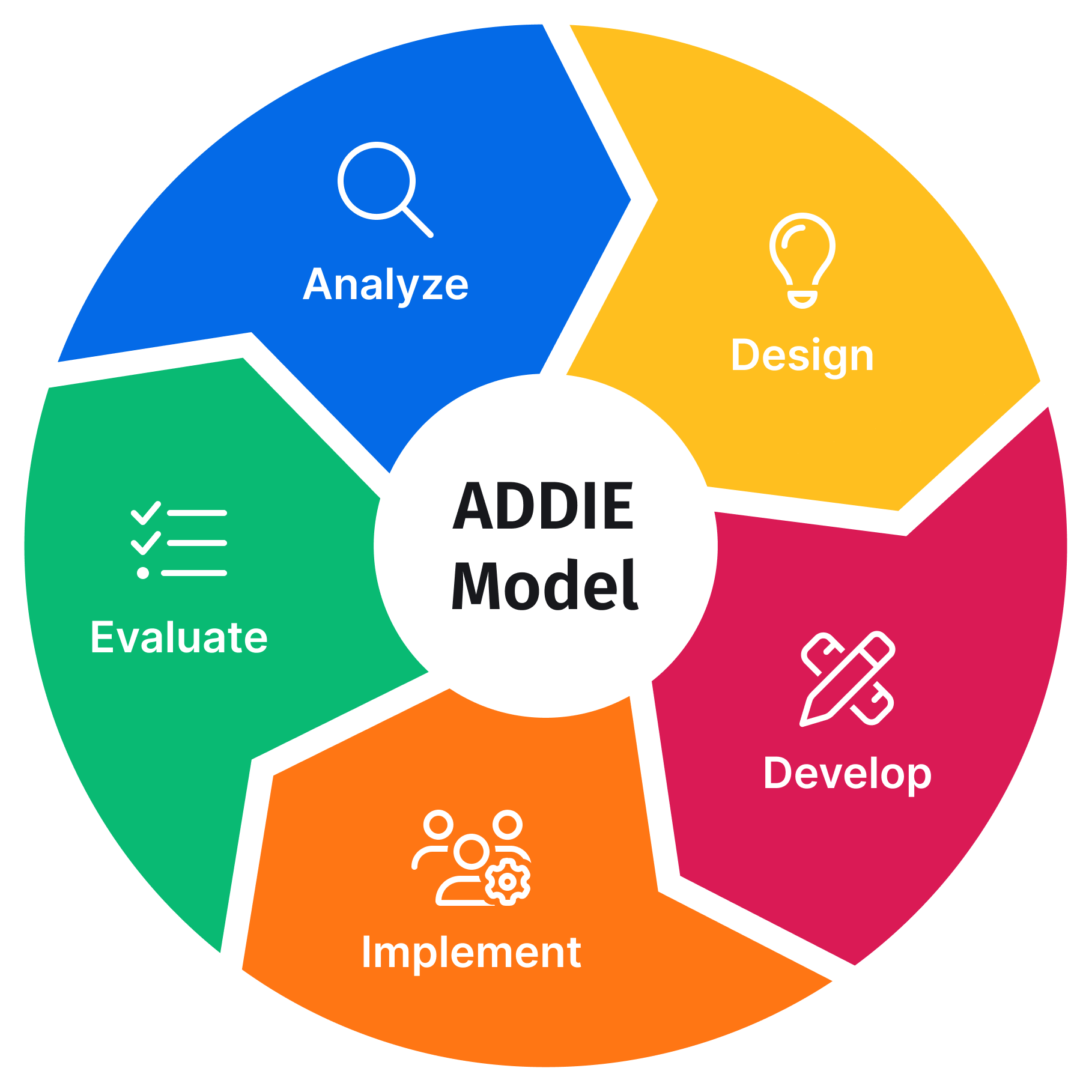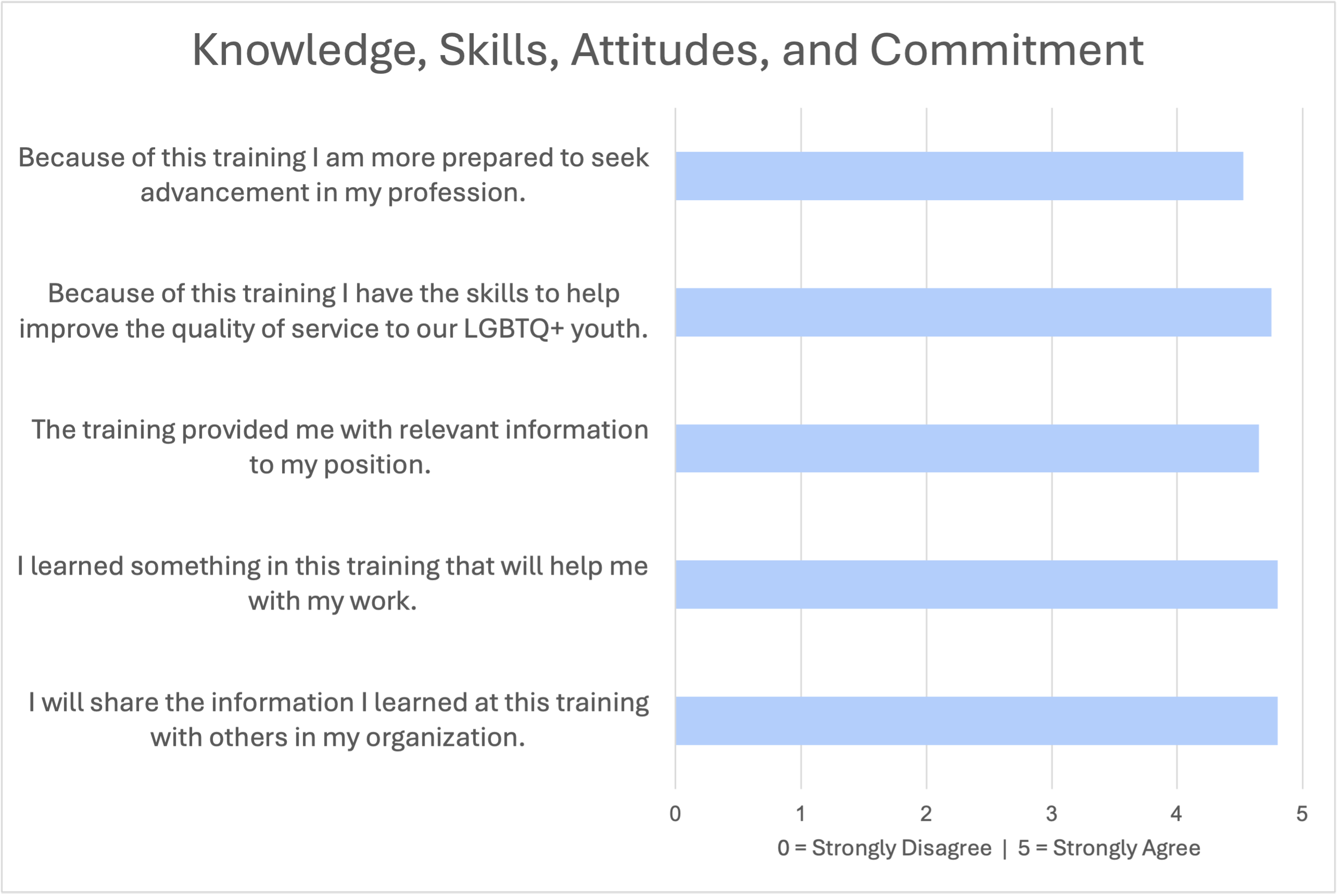
LGBTQ+ Youth Services
Client Centinela Youth Services
Project 6-hour intensive training to improve services for LGBTQ+ youth
Services Needs analysis, curriculum design, 6 hours of learning content, in-person facilitation, results evaluation
To create this course, I used the ADDIE model of instructional design.
Its five steps are: Analyze, Design, Develop, Implement, and Evaluate.
Analysis
-
I learned that the organization served youth ages 6+ who were at risk of entering the criminal justice system.
-
Using a pre-survey, I learned that staff were diverse in terms of race, age, and tenure.
Across programs, staff mostly worked directly with youth and families.
The group had varying levels of comfort and prior knowledge with the subject of LGBTQ+ terms and equity practices.
-
The client requested a three-month timeline. They preferred a one-day, in-person intensive training in order to build relationships among a primarily remote staff.
Learner Personas
Anticipated learner profiles based on the analysis.
Design
Based on the analysis, I created five goals for the training.
Goals reflected the critical behaviors that the staff would have to perform after the training.
Create a safer space for youth to disclose their identity journey.
Use guidelines for protecting youth privacy and confidentiality.
Apply these insights to people, policy, and practice.
Use inclusive language.
Differentiate sex, gender identity, gender expression, and sexual orientation.
Bootstrapping
Featured sources: National Library of Medicine, The Trevor Project, NASW, SME interviews
To create course content, I used scholarly and web research, and consulted with Subject Matter Experts (SMEs).
-
I drew on resources from service providers who were innovating in the field of care for LGBTQ+ youth.
Key literature for social work best practices included reports from the National Association of Social Workers (NASW) and the Lambda Legal Defense & Education Fund (Lambda Legal).
Literature for bias and inclusive language included a toolkit from the University of Nebraska Medical Center, toolkit guidelines from the Coalition for Diversity and Inclusion in Scholarly Communications, a Trevor Project survey, and a report from San Francisco State University’s Family Acceptance Project.
-
I drew on scholarly research from the National Library of Medicine to draft content about coming out milestones, and Pew Research studies for qualitative and quantitative information about the coming out experience.
-
I conducted interviews with SMEs in the field of youth support and LGBTQ+ issues. My SMEs were LGBTQ+ professionals of color in the public sector.
They shared personal experiences with accepting vs. rejecting behaviors, ways they expected others to correct mistakes, and elements that have made spaces feel welcoming for them. These experiences I was able to work into later scenarios for group problem-solving.
Finally, I consulted with the organization staff themselves. I asked about common challenges they experienced, places where they felt uncertain, and specific instances they might like to unpack as a group.
Curriculum
I developed four segments comprising content, practice, and discussion.
I scaffolded instruction for novices, helping them define terms and understand the training’s relevance.
Then I challenged them to think. Based on what was learned, how would they approach a difficult situation?
The training ended with teams creating action steps for follow-up.
Goal
Use…
Differentiate…
Use guidelines…
Create a safer space…
Apply insights …
Unit
Language Matters
Consent & Confidentiality
Coming Out
On the Job
Content
Learning Lab
The LGBTQIA+ Acronym
Practice with SOGIE
Discussion
Youth privacy
Learning Lab
Why data collection helps
Discussion
Coming out milestones
Accepting vs. rejecting
Policy and practice
Discussion
Action Planning
Evaluation
Closing
Abridged curriculum.
Practice and Feedback
Learners practiced applying their knowledge as a skill.
Feedback usually took the form of instructor comments, or group perspectives on the answer.
Overall, practice was designed with conversation, interactivity, and critical thinking in mind.
-

Learning Lab Scenario
Feedback: Instructor and group discussion
Use inclusive language
-

Name the identity (Terminology recall)
Feedback: Answer revealed on slide, group discussion
Differentiate between...
-

Group discussion
Feedback: Peer feedback, instructor affirmation
Apply insights to people, policy, and practice
Evaluate
I evaluated results using the New World Kirkpatrick Model.
Through longer term follow-up I will assess broader outcomes for the organization’s LGBTQ+ youth.
-
Staff are transitioning to a more inclusive intake documentation system.
A new intake assessment form reflects updated language and goals.
-
An office redesign squad is considering ways to make the space more welcoming as the staff shifts into onsite work.
-
Learner competencies grew by 25% in all five target areas, and staff reported that they now have the skills to improve service quality for LGBTQ+ youth.
-
Learners appreciated my (the instructor’s) energy and enthusiasm.
"Relevant" and "personal" scenarios helped make discussion “not stagnant.”
The “open discussions,” space to “share, debate, and discuss,” and hearing coworkers’ experiences were highlights for this group.
I used Microsoft Excel to clean and visualize data.
-
"I really enjoyed how it was hands on. This allowed me to be more involved and understand what was going on."
-
"I liked best that scenarios were relevant to case management experience."
-
"I liked best the opportunity to hear and learn about LGBTQIA real life scenarios."






